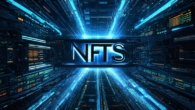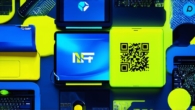
How do non-fungible tokens operate
In recent years, non-fungible tokens (NFTs) have gained immense popularity and traction in the digital world. These unique digital assets are designed to represent ownership of rare and valuable items such as art, collectibles, and even real estate. NFT developers have been able to create a new market for their products by leveraging blockchain technology to enable secure and transparent transactions.
In this article, we will explore the ins and outs of NFTs and provide actionable insights for NFT developers to create successful and viral digital assets.
What are Non-Fungible Tokens (NFTs)?

Non-fungible tokens (NFTs) are unique digital assets that represent ownership of a specific item or content. Unlike cryptocurrencies, which are interchangeable and fungible, NFTs are one-of-a-kind and cannot be replaced by any other item or content. This uniqueness is achieved through the use of blockchain technology to store and verify the ownership of the NFT.
Each NFT is assigned a unique identifier, typically represented as an alphanumeric string on a blockchain, which can be used to track the ownership and transfer of the asset. The ownership of an NFT can be transferred between individuals or organizations through smart contracts on the blockchain. This ensures that the ownership of the NFT is transparent and immutable, making it difficult for anyone to tamper with the ownership records.
How do Non-Fungible Tokens (NFTs) Work?
NFTs work by leveraging blockchain technology to enable secure and transparent transactions. Blockchain is a decentralized, distributed ledger that records all transactions in a transparent and immutable manner. NFTs are stored on the blockchain as digital assets, which can be bought, sold, and traded like any other asset.
When an NFT is created, it is minted on the blockchain and assigned a unique identifier. This identifier is used to track the ownership of the NFT and enables secure transactions between buyers and sellers. Smart contracts are used to automate the transfer of ownership of the NFT between parties. These smart contracts ensure that the terms of the sale or transfer are met and that the ownership records are updated accordingly on the blockchain.
NFTs can be created using various platforms and tools such as OpenSea, Rarible, and SuperRare. These platforms provide a user-friendly interface for creating and selling NFTs, and also enable buyers to purchase and transfer NFTs securely.
Benefits of Non-Fungible Tokens (NFTs)
NFTs offer several benefits that make them attractive to creators and collectors alike. These benefits include:
- Unique ownership
- Transparency and immutability
- Security
- Liquidity
- Accessibility
Case Studies of Successful Non-Fungible Tokens (NFTs)
There are several successful case studies of NFTs that have gained traction in the digital world. These include:
- Cryptokitties: In 2017, Cryptokitties, a blockchain-based game, raised over $3 million in funding through an initial coin offering (ICO). The game enabled users to collect and breed unique digital cats, which were stored on the blockchain as NFTs.
- Digital Art: Several artists have successfully sold their digital art as NFTs on platforms such as OpenSea and Rarible. These NFTs represent ownership of unique digital assets that can be bought, sold, and traded like any other asset.
- Real Estate: In 2021, a digital representation of a piece of real estate in Decentraland was sold as an NFT for over $500,000. This represents a new market for real estate ownership that is facilitated by blockchain technology.
Summary
In conclusion, non-fungible tokens (NFTs) are unique digital assets that represent ownership of a specific item or content. NFTs operate by leveraging blockchain technology to enable secure and transparent transactions. They offer several benefits such as unique ownership, transparency and immutability, security, liquidity, and accessibility. Successful case studies such as Cryptokitties, digital art, and real estate demonstrate the potential of NFTs in various industries. As NFT developers, it is important to understand how NFTs operate and create successful and viral digital assets that can capture the imagination of collectors and creators alike.







